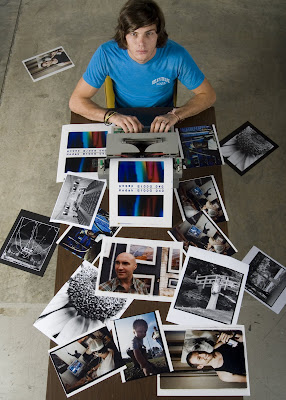Oh blogger where art thou? It's been about three months since I have even looked at one of these bad boys. I decided today that I will begin posting again due to the completion of my biology classes as well as the completion of my college admissions stuff. So in other words, I'm bored.
Most of what I'll be posting from now on is likely to be relative to my internship at Wake Forest University Eye Center as an Ophthalmic Photographer. I am not going to go into depth describing what is in these images, but only simple explanations for easy understanding. I hope everyone enjoys them.
This first image is a fundus(the inside) image of my own eyes. These were taken by David Miller, a co-worker of mine and a graduate of RCC. The photos are in sequence, right eye, left eye. This is also referred to as OD(Ocular Dexter), OS(Ocular Sinister).




























